Flatpicking on the guitar means to use a pick or plectrum to strike the strings, as opposed to fingerstyle where you use your fingers or finger picks. I’ve compiled 12 useful tips and techniques to help you improve your skills at Celtic Flatpicking, though the tips can apply to any style of Flatpicking from Bluegrass and Country to Classical and Metal. Basically, any guitar playing that requires fast picking.
The first few tips cover important reminders of correct guitar positioning, hand shifting and picking techniques then moves on to stylistic playing of Celtic guitar such as Campanella (overlapping notes) and how to embellish a tune with ornamentation.
Please leave some comments or suggestions below for your fellow Flatpickers.
1) Guitar Positioning for Flatpicking
Hold the guitar on an upward angle (30 to 45 degrees). Use a strap or footstool if that is more practical for you. Holding the guitar in an angled position will keep your wrist and fingers close to the strings, allowing you to play faster and more accurately.
2) Best Finger Positioning
Place your fingers close to the frets to avoid fret rattle and buzzing (Ex.1). Hold your fingers close to the fingerboard in an evenly spaced position (Ex. 2). Keep your fingers down on the fingerboard where possible after playing a note (Ex.3).
3) Alternate Picking Technique
As a general technique, use alternate picking (down/up picking), but experiment with consecutive down or up strokes to keep a consistent tone, during fast passages or in a rhythmic pattern.
4) Campanella Flatpicking
Keep the note(s) held down to produce a smooth (legato) harp-like ringing sound, letting the notes overlap. This technique has several names: Cascading, Harp-Scales or Campanella, which I will call them. Sometimes, this technique is written over the music with let ring throughout (l.r.). Campanella should flow smoothly with no breaks between notes, similar to the sound of a piano with the pedal down.
The first example below shows the traditional way to play the A Major scale, followed by the same scale played in a Campanella style. All examples are in Open D tuning (DADF#AD):


5) Hammer Ons and Pull Offs
Use hammer ons and pull offs frequently during scale passages and faster tunes. Hammer ons are especially useful when switching between strings, and pull offs when going from a higher fretted note to a lower open string. Below is an excerpt from “Carolan’s Concerto” from my book Celtic Flatpicking in Open D Tuning:

6) Shifting Hand on Open Strings
Use open strings when you shift your hand position from a higher to lower or lower to higher note. In other words, if you are playing a fretted note down the neck, then moving up the neck, choose an open string to transition from one position to another. In the example below, shift your hand at the 7th fret down while playing the open 1st string:

7) Write Down Best Fingerings
Some tunes can be played very fast, so always start slow when you are learning the tune. Practice with a metronome and gradually increase the tempo, then write down the fingering. I usually only write my preferred fingerings at position changes or unusual note passages and often write only one finger number as a target note.
8) Memorize the Fingerings
Memorize the fingering in difficult passages or when there is a hand position change up or down the neck. I often use accompaniment software as backing tracks or record a scratch rhythm guitar to drill the tune repeatedly until memorized. Once you have a suitable fingering, gradually speed up until in muscle memory.
9) Flatpicking Hand Movement
Keep the point of the pick close to the strings moving in a tight arc. Keep an eye on the distance your pick moves back and forth from the string. Less pick motion is usually best for faster passages. Also, experiment with the angle the pick hits the strings. I keep my pick slightly tilted forward as opposed to parallel to the strings (see below).
10) Pick Gauges and Tone
Experiment with different pick gauges and sizes. Many flatpickers use a heavy pick to produce a precise tone (.73 and up). Heavier picks can produce a duller tone, so I typically use a lighter pick for strumming and a heavier pick for Flatpicking. I often change picks several times in the same song.
For example, I will strum the rhythm parts with a lighter pick, then switch to a heavier pick for the solo. I have adapted my music stand with an “L” bracket to hold many picks, though you can also just use a pick holder on a mic stand. The main point—experiment with picks to produce different timbres or tones.
11) Wrist and Finger Position
Keep your picking hand palm and fourth pinky finger off the bridge (unless doing palm muting). This will allow your hand to move freely and more precisely between the strings.
12) Celtic Ornamentation
Listen to how accomplished fiddle players embellish the melody by adding ornamentation. First, learn the tune thoroughly, then gradually add some ornamented notes. The melody is always the most important of any tune, while the ornamentation or embellished notes are secondary.
Here are six examples of ornamentation:
Ex.1. The Cut is a quick pull off from a higher to a lower note—usually by a tone (2 frets) or a semi-tone (1 fret) above.

Ex.2. The Tap is a quick hammer on played from a lower to a higher note, usually by a tone (2 frets) or a semi-tone (1 fret) below.
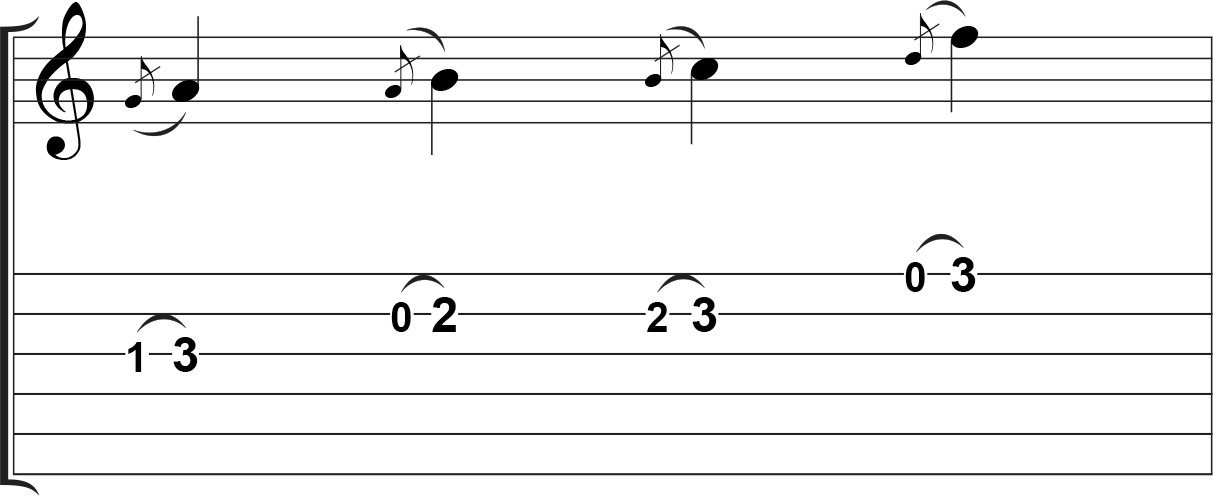
Ex.3. The Casadh or Pat is like a trill that consists of a hammer on and pull off above a note and played legato with one pick stroke.


The Roll
Ex.5. The Roll or Long Roll is played legato with one pick stroke. Think of the roll as an interruption to the main note rather than playing five separate notes. The roll ornaments the main note.
There are 5 parts: 1) play the main note, 2) hammer on to a higher note, 3) pull off back to the main note, 4) pull off to a note below the main note, 5) hammer on to the main note again.

Ex.1. Add an extra note between two notes ascending.
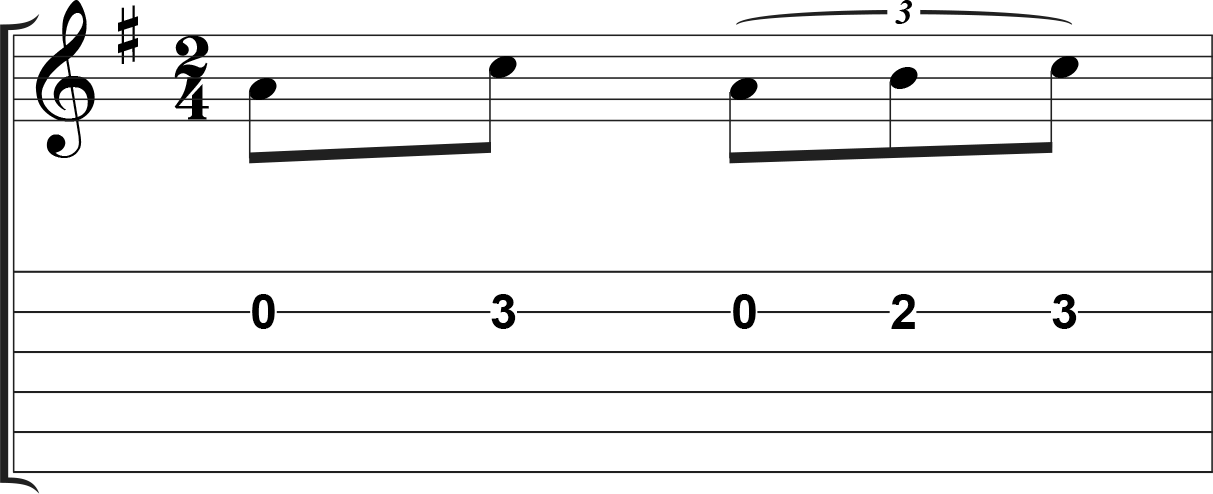
Ex.2. Add an extra note between two notes descending.
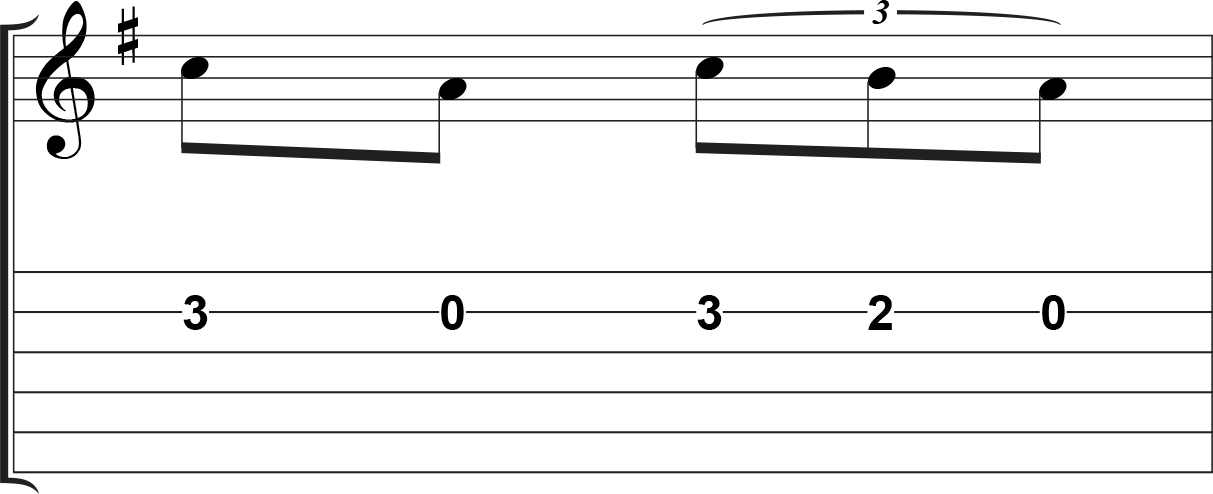
Ex.3. Add an extra note above the main note.
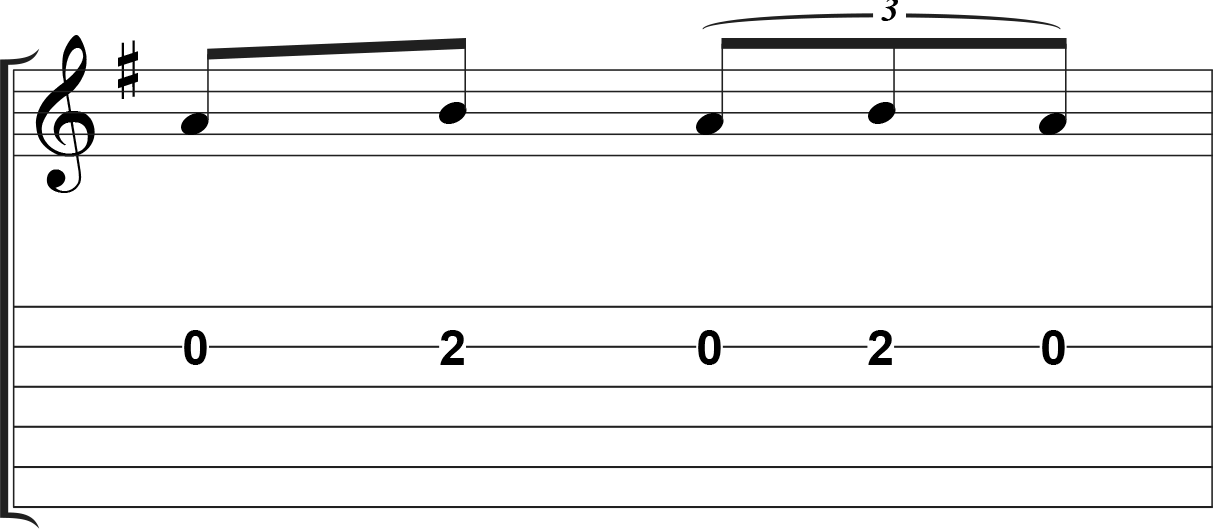
Ex.4. Add an extra note below the main note.
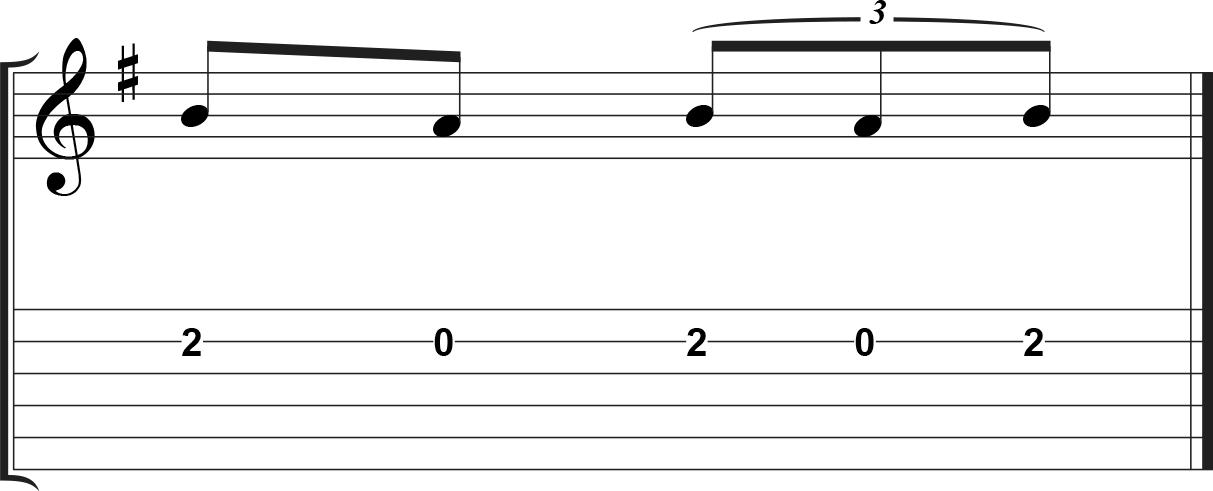
Celtic Flatpicking Open D Guitar Tuning
Tuning your guitar to DADGAD compliments Celtic guitar music perfectly. The 30+ tunes represent some well-known Celtic session tunes and songs.
There are jigs, reels, songs, hornpipes, and waltzes with guitar chords. DADGAD chords, strumming patterns, major and minor scales, and a full DADGAD fingerboard chart.
30+ Celtic Flatpicking Tunes in DADGAD Tuning
DADGAD Guitar – Celtic Flatpicking
Tuning your guitar to DADGAD compliments Celtic guitar music perfectly. The 30+ tunes represent some well-known Celtic session tunes and songs.
There are jigs, reels, songs, hornpipes, and waltzes with guitar chords. DADGAD chords, strumming patterns, major and minor scales, and a full DADGAD fingerboard chart.
30+ Celtic Flatpicking Tunes in DADGAD Tuning
[yop_poll id=”4″]



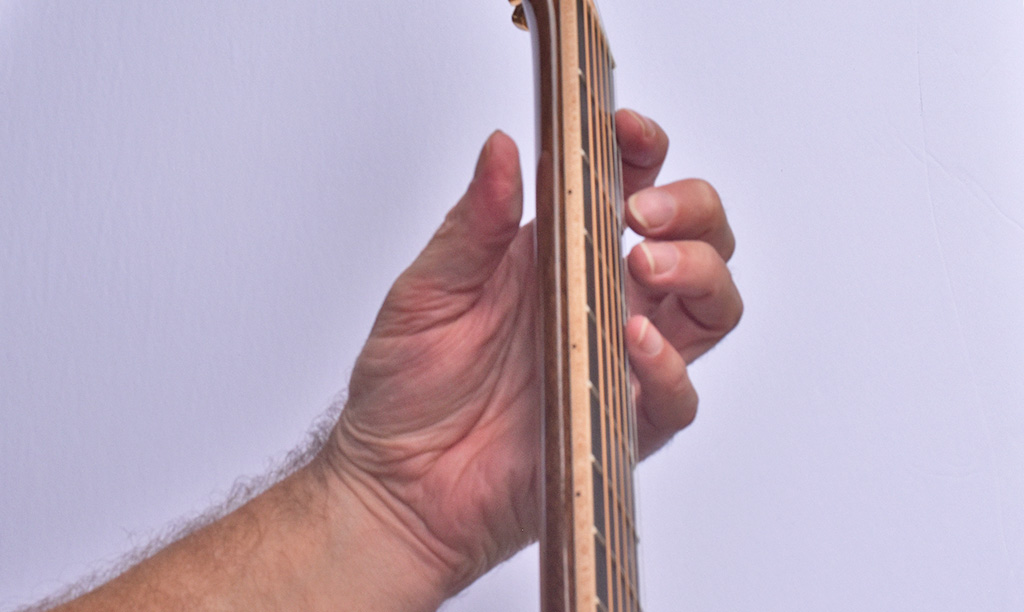
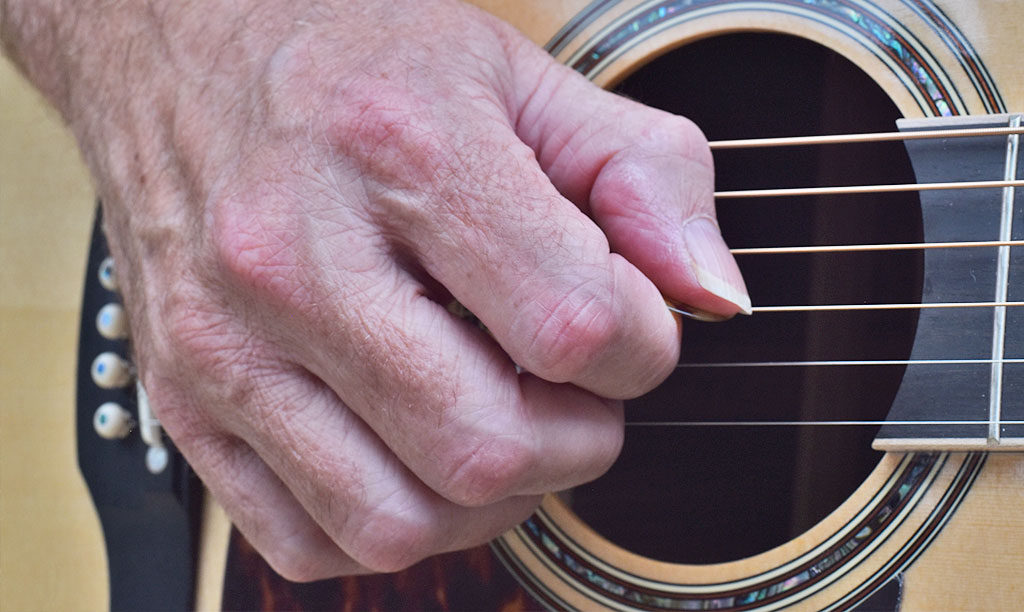
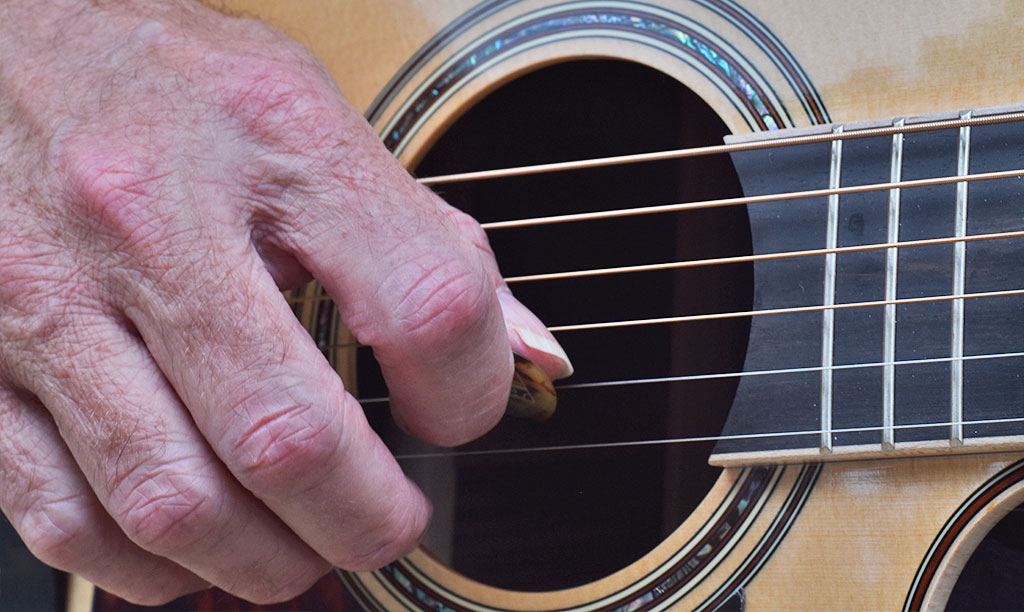
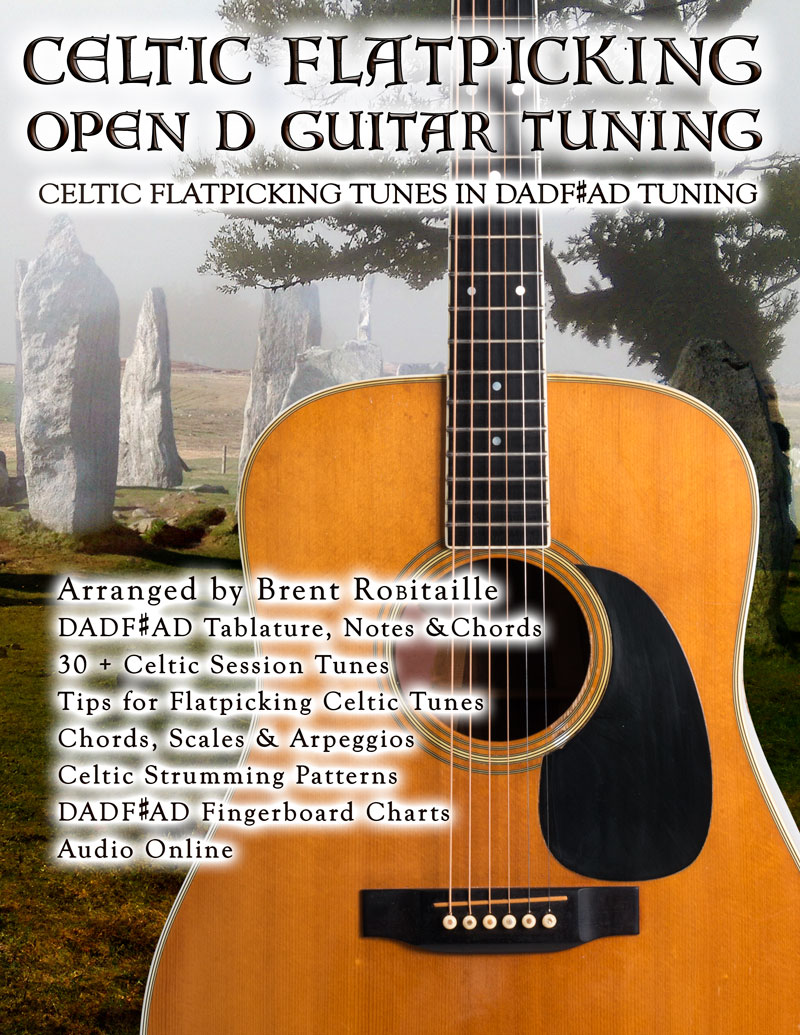
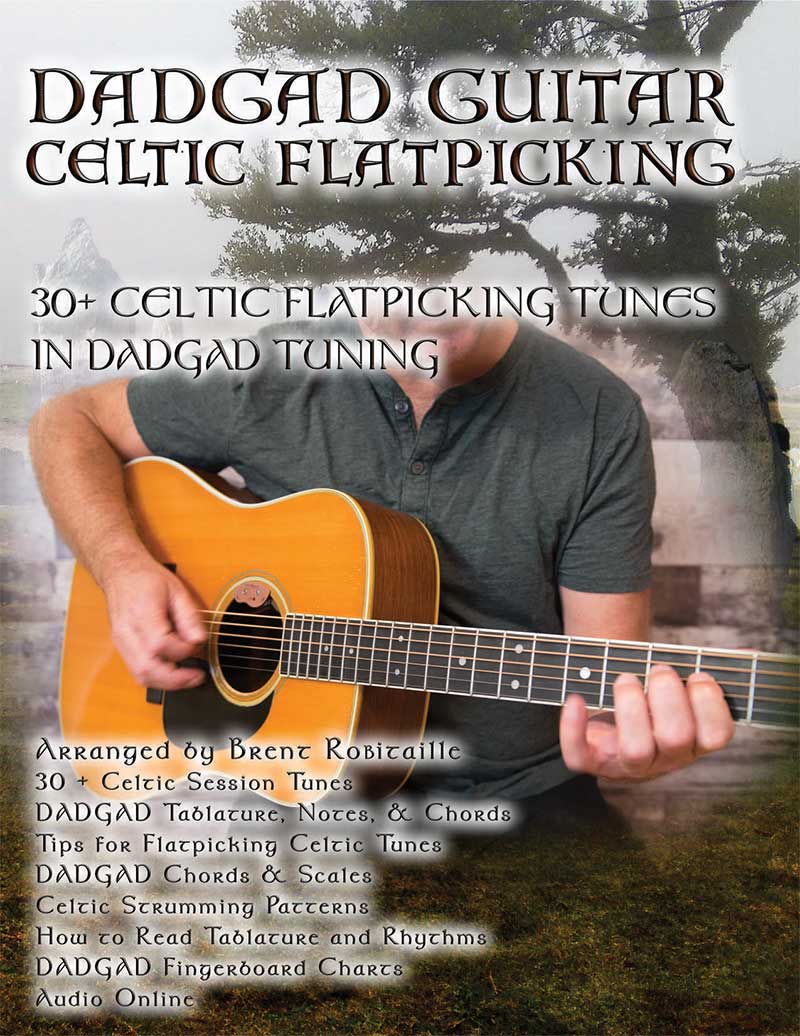
Recent Comments